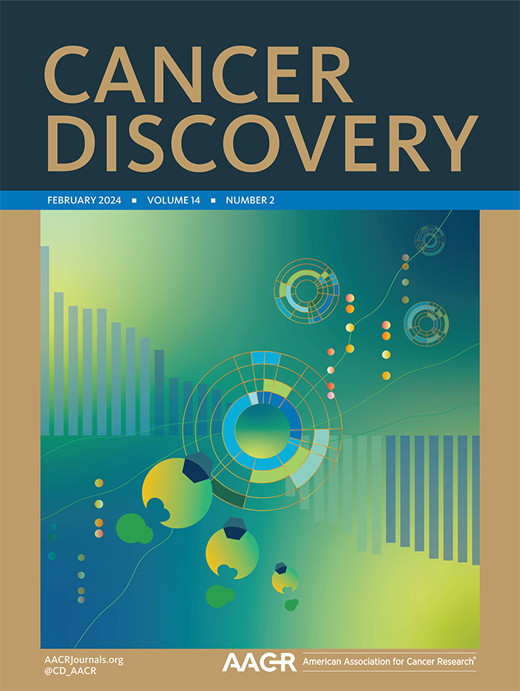暴露于肿瘤促进剂和慢性组织损伤可逆转正常小鼠皮肤中高度突变细胞的长期潜伏期。
IF 29.7
1区 医学
Q1 ONCOLOGY
引用次数: 0
摘要
近一个世纪前使用小鼠皮肤模型进行的历史研究确定了癌症进化的两个关键步骤:起始(可能的突变事件)和促进(由炎症和细胞增殖驱动)。起始被认为是永久性的,促进是癌症发展的关键限速步骤。在这里,我们进行了全基因组测序,以证明具有数千个诱变剂诱导突变的初始细胞可以持续很长一段时间,并且不会被细胞竞争或免疫干预移除,从而模仿正常人体组织中具有癌症驱动突变的细胞的持久性。在小鼠中,这些细胞不会产生肿瘤,除非暴露于肿瘤启动子TPA。组织损伤和再生增殖,而不是正常的细胞更新,总是触发肿瘤的形成。损伤、启动子治疗和肥胖在不增加突变负担的情况下增强了促进作用,这支持了未来针对促进危险因素的癌症预防工作的可能性。本文章由计算机程序翻译,如有差异,请以英文原文为准。
Long term latency of highly mutated cells in normal mouse skin is reversed by exposure to tumor promoters and chronic tissue damage.
Historical studies performed nearly a century ago using mouse skin models identified two key steps in cancer evolution: initiation, a likely mutational event, and promotion, driven by inflammation and cell proliferation. Initiation was proposed to be permanent, with promotion as the critical rate-limiting step for cancer development. Here, we carried out whole genome sequencing to demonstrate that initiated cells with thousands of mutagen-induced mutations can persist for long periods and are not removed by cell competition or by immune intervention, thus mimicking the persistence of cells with cancer driver mutations in normal human tissues. In the mouse, these cells do not give rise to tumors unless exposed to the tumor promoter TPA. Tissue damage and regenerative proliferation, but not normal cell turnover, consistently trigger tumor formation. Wounding, promoter treatment, and obesity enhance promotion without increasing mutational burden, supporting the possibility of future cancer prevention efforts directed at promotional risk factors.
求助全文
通过发布文献求助,成功后即可免费获取论文全文。
去求助
来源期刊

Cancer discovery
ONCOLOGY-
CiteScore
22.90
自引率
1.40%
发文量
838
审稿时长
6-12 weeks
期刊介绍:
Cancer Discovery publishes high-impact, peer-reviewed articles detailing significant advances in both research and clinical trials. Serving as a premier cancer information resource, the journal also features Review Articles, Perspectives, Commentaries, News stories, and Research Watch summaries to keep readers abreast of the latest findings in the field. Covering a wide range of topics, from laboratory research to clinical trials and epidemiologic studies, Cancer Discovery spans the entire spectrum of cancer research and medicine.
 求助内容:
求助内容: 应助结果提醒方式:
应助结果提醒方式:


